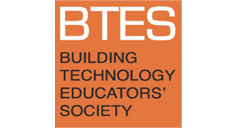Reducing Building Water Use Intensity (WUI): Tools for Academia and Practice
Abstract
Recent prolonged droughts have increased water awareness worldwide, yet limited progress has been made to expand integrated building solutions. This paper investigates the critical tools needed by architectural practice and academia to support water efficient pedagogy and design. A water auditing protocol was developed, tested, and standardized during an undergraduate/graduate architecture water efficiency course over 2017-19. This paper presents the case study implementation of this tool for water use reduction in a commercial building in Tucson, Arizona. The paper ultimately evaluates the success of this new tool through four outcomes from the case study. First, a cutting-edge, service-learning pedagogical model was developed to teach water efficient design to architecture students. Second, the local water service provider was given a new tool for future commercial building owner compliance in the case of a Level 2 Drought declaration. Third, the water audit provided the building owner with cost- effective strategies to accomplish use reduction. Finally, the architectural professional community received a new tool for water efficient design and retrofit. The paper presents a tool for architecture students and professionals to expand integrated water efficient design for commercial buildings.
Keywords: Energy and Systems, Professional Practice, Computational Design and Analysis, Pedagogy
How to Cite:
Crosson, C., (2019) “Reducing Building Water Use Intensity (WUI): Tools for Academia and Practice”, Building Technology Educators’ Society 2019(1). doi: https://doi.org/10.7275/t3tm-5s40
Downloads:
Download PDF
459 Views
138 Downloads
